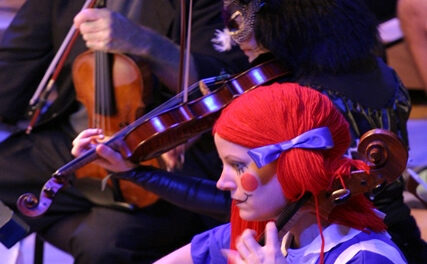Rarely do classical musicians collaborate with popular performers. The world-renowned Arditti Quartet, however, has a reputation for a pioneering spirit. And so it was fitting that the Quartet would perform together with actor-poet-musician Saul Williams. The final concert of a week of poetry and music, entitled “Hopes Dreams Realities,” took place at Memorial Hall on the campus of University of North Carolina at Chapel Hill.
It seems to be the year of American composer Charles Ives, and as luck would have it, the first half of the program included Study No. 9, “The Anti-Abolitionist-Riots in the 1830s and 1840s” (1908/1909) performed by pianist Stefan Litwin, and Five Piano Quintet Pieces (1906-1913), performed by the Arditti Quartet and Litwin, works seldom heard outside of the Ivory Tower of academia. Litwin also played Hanns Eisler’s Sonata No. 3 for piano (1943). Eisler’s atonal piano work requires careful listening — the fugal subject in the third section, for example, gave me something to hang on to. But even baffled-looking new listeners seemed to recognize the return in the final moments, politely applauding the performance. Challenging music, indeed!
German composer Eisler was a student of Arnold Schoenberg, though he later rejected the serial techniques of the Second Viennese School. Hollywood Elegies (1942) is a collection of eight songs, seven of which were penned by his friend, poet and dramatist Bertolt Brecht. (The text of the final song, “Nightmare,” was written by Eisler.) A dramatic yet collected performance by baritone Valentin Lanzrein revealed art songs that are brief, lyric statements underscoring the absurdity of life in the “City of Angels” during the most horrific moments of the 20th century. The songs were paired with Arnold Schoenberg’s “Ode to Napoleon Buonaparte,” Op. 41, from the same year; I was struck by the sheer elegance of the piece and the fine performance.
When political statements are risky, composers look back, in this case to the poetry of Lord Byron. Schoenberg’s music remains controversial, but there is no doubt of its importance. Using the declamatory technique Schoenberg employed in his 1912 setting of Albert Giraud’s Pierrot Luniere, Matthew Carey provided narration through sprechstimme that was spell-binding.
With a rousing welcome to the stage, Saul Williams joined the Arditti Quartet for the American premiere of Thomas Kessler’s NGT WHT (The Dead Emcee Scrolls) (2007) (with text from Williams’ The Dead Emcee Scrolls: The Lost Teachings of Hip-Hop). Instead of a beat box, a drum machine, or a synthesizer, the emcee/poet projected rhythm, beat, and texture through poetry. Coupled with pulsating, high energy delivery, Williams’ text is rich, sensual, parsed, jarring, sometimes “R-rated,” controversial, and often beautiful. The string quartet players mimicked human speech and extended it, creating whoosh, click, tap, pluck, and glissandos that served as punctuation, texture, and highlighting. With both language and music — both essential human elements — the evening closed with a standing ovation.











